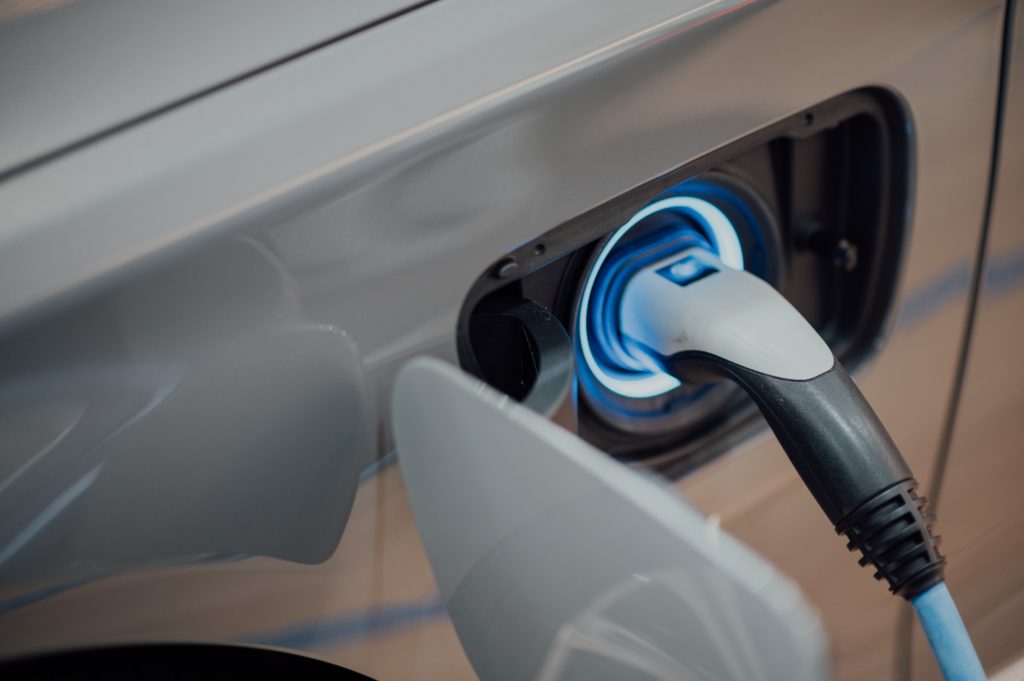Almost 100 battery gigafactories will be around the world. Necessary to meet the huge demand for electric vehicles imposed by regulations and demanded by the market. With colossal investments with Europe at the center. And with a role also for Italy.
by Carlo Andrea Finotto

In the heart of Germany, in Salzgitter, Lower Saxony, roughly halfway between Dortmund and Berlin. That's where it is taking shape mobility revolution in Europe and the Western world. And that's where the real challenge to China and Asia in general starts.
We all have a date in mind: 2035, the one decided by the European Union to decree it stop on the sale of vehicles with thermal engines: petrol or diesel, to understand. However, the real date that, perhaps, we should note is another: July 7, 2022. That day the Volkswagen group presented what will be the new gigafactory paradigm for the construction of batteries for electric cars.
German Chancellor Olaf Scholz said that “Volkswagen shows what the future of sustainable and climate-friendly mobility will look like. Burning fossil fuels is no longer possible (…). Producing batteries in Germany and Europe starting from raw materials and single cells is strategic. Being independent from technologies and materials is fundamental ».
In his words, Scholz explained why the factory plays an important role in the general framework of sustainable mobility. When ready and fully operational, the Lower Saxony plant will have a total production capacity of 40 Gwh, capable of turning out batteries for around 500,000 vehicles per year. But above all, Salzgitter is part of a investment plan of 20 billion euros and 20 thousand hires which foresees the opening of 6 gigafactories in Europe (as well as in Germany also in Hungary, the Czech Republic and Spain) by 2030 for a total of 240 Gwh.
For Volkswagen CEO Herbert Diess, «the battery cell business is one of the pillars on which our“ New Auto ”strategy is based, which will transform Volkswagen into a provider of software-based sustainable mobility. Opening our own lithium-ion cell factory is a mega-project in technical and economic terms. It shows that we are bringing the technology of the future to Germany ”.
Salzgitter represents an epochal passage of the baton: it has always been the heart of the production of thermal engines and will soon become the heart of the electric car and the strategies of the Volkswagen group which has created a new company named PowerCo for this purpose. But there is more. «In many other cases, gigafactories are large plants which, so to speak, are limited to assembling the various elements. Volkswagen, on the other hand, has decided to build the batteries starting from raw materials: in practice it will directly challenge Asian competitors, such as the Chinese of Catl and BYD, the Koreans of Lg or the Japanese of Nissan "explains Mario Cianflone, journalist in charge of the engine section of the Sole 24 Ore and automotive expert. "Furthermore, the Lower Saxony factory will become a sort of matrix: the other Volkswagen gigafactories in the world will be Salzgitter clones," adds Cianflone.
An all-out comparison with Europe at the center
Volkswagen, of course, is not the only player in this match he sees the main global competitors are involved (from Stellantis to Mercedes, from Tesla to Nissan passing through the Chinese BYD, BAIC, Geely). The confrontation touches all continents, but the main battleground has all the air of being Europe, where, according to the most recent data and the announcements made by the individual groups, about 40 gigafactories are expected (about ten in Germany alone ) about 90 globally. The others are in Asia (about thirty), the United States (about fifteen), South America, Africa and Australia.
"Europe is proving to be the most important area for battery development - says Claudio Rossi, Professor of Electric Propulsion Systems at the University of Bologna - This is where the greatest demand is being registered and therefore the main groups. The number of projects announced for the next few years, if they are all implemented, will produce more than enough batteries to satisfy the entire continental car market, equal to approximately 11.7 million registrations in 2021 ”.
There is no shortage of unknowns. On paper, there is talk of gigafactory for around 700 Gwh in total in Europe, which would mean equipping over 13 million vehicles with 50 Kwh batteries: usually, studies use this figure to identify a standard battery. In reality, Cianflone emphasizes, «manufacturers and the market are moving towards models that allow greater margins, which require 80 Kwh batteries and guarantee consumption of 15-20 Kwh per 100 km. We are moving towards sustainable mobility made up of larger and more expensive vehicles that require better performing batteries ».
Another question mark concerns how many of the hypothesized projects will actually see the light, also because the figures in the field are decidedly large. If it is true that the cost of building a lithium-ion battery has dropped from 300 euros per kWh in 2016 to 131 in 2021, it is also true that only in the second half of the decade will it drop below 100 euros per kWh, for reach 90 in 2030. At least according to the Global Automotive Outlook 2022 by Alix Partners.
"The pandemic caused by Covid first and the war in Ukraine then did not facilitate the road map of the transition" reflects Francesco Vellucci, research engineer of the Laboratory of Systems and Technologies for Sustainable Mobility of ENEA and national referent for the Batteries sector in the within the European Union's Set-Plan (Strategic Energy Technology Plan). "We are witnessing a greater difficulty in finding raw materials and microchips, and a consequent increase in costs," he stresses.
«Today - recalls Claudio Rossi - building a gigafactory for batteries means being able to invest 80-100 million euros per Gwh. Also, you don't build a factory of that kind out of thin air, in a meadow. Pilot projects, process technologies and actual lines are needed for the next steps". Just as is happening in Salzgitter, where experimentation already exists, technologies and knowledge as well.
However, moving from theory to practice is not easy and this is also demonstrated by the fact that, at the moment, the plants already operating in Europe are relatively few and have required years of gestation, including: Britishvolt, Northvolt, Samsung, Sk and Lg.
«The transition is not decided by the EU or the government. The market decides it »points out Claudio Rossi. And, in fact, the forecasts for the next few years contained in the Alix Partners report are quite clear. In 2035 Europe will be the territory where the electric car will have the largest market share: 83%, to which must be added a 2% from Phev (plug-in hybrid electric vehicle) and a 13% from mild-hybrid. Traditional internal combustion engine (Ice) vehicles will be worth just 2%. In practice, the current picture will more than be reversed. In China, the market share of electric cars will rise from today's 12% to 56% (91% also considering the various hybrid types); in the US, electric mobility will pass from today's 3% to the 59% (again 91% adding hybrids).
Big investments
This transformation, it goes without saying, predicts a surge of investments: 526 billion dollars between 2022 and 2026, of which 100 in North America, 94 in Europe, 92 in China. In the study by the Fraunhofer Institute in Munich dedicated to solid-state batteries - on which the sector is banking a lot to increase reliability and autonomy and reduce costs, but which should not be available for cars and trucks before the end of the decade - it is expected for the traditional lithium-ion model, a world market of between 2,000 and 8,000 Gwh in 2035, to which 20 to 50 Gwh of solid state batteries can be added. For that time, the construction cost should drop to around 75 euros per Kwh.
The growth margins of the sector are great, considering that in 2021 the demand for lithium-ion batteries was a total of 340 Gwh (doubled compared to the previous year) according to data from the Global Electric Vehicle Outlook 2022 of the International Energy Agency (Iea). All future scenarios are there to explain the great activism and billionaire investments planned by the major automotive groups globally. However, “Europe, and with it Italy, are several years behind. The sector is dominated by Asian competitors and in particular from China »recalls Beatrice Pulvirenti, professor at the University of Bologna, where she is involved, among other things, with research on the thermal management of lithium batteries.
The overwhelming power of China
L'Outlook of the Iea shows in particular the excessive power of China in the production of raw materials (nickel, lithium, cobalt, graphene with quotas from about 35 to 70%), in the construction of cell components, in the production of batteries (over 75% globally) . Volkswagen's maxi-investment and the more or less similar ones by Stellantis, Mercedes and company are just a first step in the difficult run-up.
As mentioned at the beginning, «the goal of all the projects whose announcements are read is to have autonomous process, production and also product capacity - remarks Claudio Rossi - given that for the moment the various components are purchased from those who produce them. Over time, if skills increase, independence will also increase ».
When you have a strategic technological and industrial advantage, however, you do everything to not let it take away and to consolidate your position. In fact, the various battery gigafactory projects around the world, starting with Europe, see the large Chinese, Korean and Japanese groups present: independently or with Western partners. And often, as Rossi points out, “the processes involving Asian companies are, so to speak, behind closed doors. This means that, even if they are useful for European industry, there is no knowledge transfer or involvement of European partners ”.
A variable that could change the cards on the table and increase Western competitiveness is that of "traceability of the entire supply chain, from the extraction of raw materials in mines - from lithium to cobalt - to assembly, recycling and disposal of batteries. Today, also considering the transport, producing a standard battery involves the emission of 2,596 kg of Co2 »says Beatrice Pulvirenti. But there is also a social cost, especially linked to working conditions, about which there is not much transparency, particularly outside the Western world. In this sense, the introduction of clear regulations that everyone must abide by could force producers to compete on equal terms. “Between the mine and the factory there is a process that almost always takes place in China and which is very often obscure. It must become more transparent », adds Claudio Rossi.
The role of Italy
And what is, or what could be, the role of Italy in this immense global playing field? “At the moment four gigafactories are planned, explains Francesco Vellucci. The best known is the one announced by Stellantis in Termoli, which should be the third pole of the group in Europe after Douvrin in France and Kaiserslautern in Germany ». The CEO, Carlos Tavares, has announced investments of over 30 billion euros in electrification and software by 2025, a plan that also includes a gigafactory with Samsung in the US, in Kokomo in Indiana, and one with LG in Canada. in Windsor, Ontario.
In Italy the gigafactory of Italvolt in Piedmont, near Ivrea, that of Fincantieri in Piedimonte San Germano (Frosinone), in Lazio “and that of Faam which foresees a plant in the province of Caserta capable of reaching 8 Gwh when fully operational, explains Vellucci. It will produce lithium-iron-phosphate batteries that are reliable and cost-effective, intended for both stationary and industrial applications, and also for industrial vehicles ».
According to Claudio Rossi, of the University of Bologna, Italy also has another important card to play in the global context: «I am thinking of the production equipment, the assembly of the cells, the production lines. We are talking about huge automated plants. It is a sector in which we boast world leaders such as the packaging machinery sector, or Comau. We can play an important role: we are facing a market that exceeds that of cigarettes and food packaging. It is a great opportunity ».
Carlo Andrea Finotto, The sun 24 hours






